Organizational Culture & Values
Diversity gains importance as strategy for CEOs

Diversity and Inclusion have long been recognized by many leaders as an important component of their business strategy. In 2020, Diversity and Inclusion (D & I) gained attention from CEOs, propelled by the social activism and awareness from the summer 2020 and — more directly — the increasingly challenging employment market. As 66% of CEOs plan on increasing headcount in the year ahead, the intense competition to identify, recruit and hire new employees and the increasing pressure to retain existing employees means they need to consider the importance of D & I for their business and recruiting strategies.
Data from Glassdoor suggests 67% of job seekers consider workplace diversity an important factor when considering employment opportunities, and more than 50% of current employees want their workplace to do more to increase diversity. The emerging Millennial and Gen Z workforce are demographically much more diverse than the rapidly retiring boomer generation. These younger workers will be looking for and expecting a workplace that promotes equality, reflects the diversity of their generation and a place where they feel welcome and respected.
There was significant change in sentiments about the importance of diversity among CEOs of small and midsize businesses between December 2019 and December 2020. This shift illustrates the increasing awareness and growing recognition of the importance of D & I for their business.
In 2020, half (50%) of CEOs reported that their strategic plan included D & I related goals and objectives that support recruitment, development and retention, up from 43% in 2019.
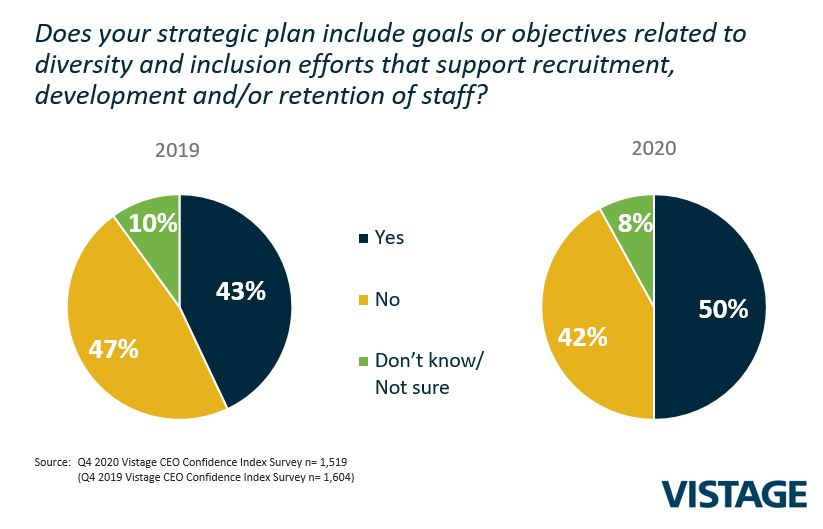
In 2020, 52% of CEOs reported the primary objective of their D&I initiatives were designed to attract and retain talent, up 3 percentage points from 2019.
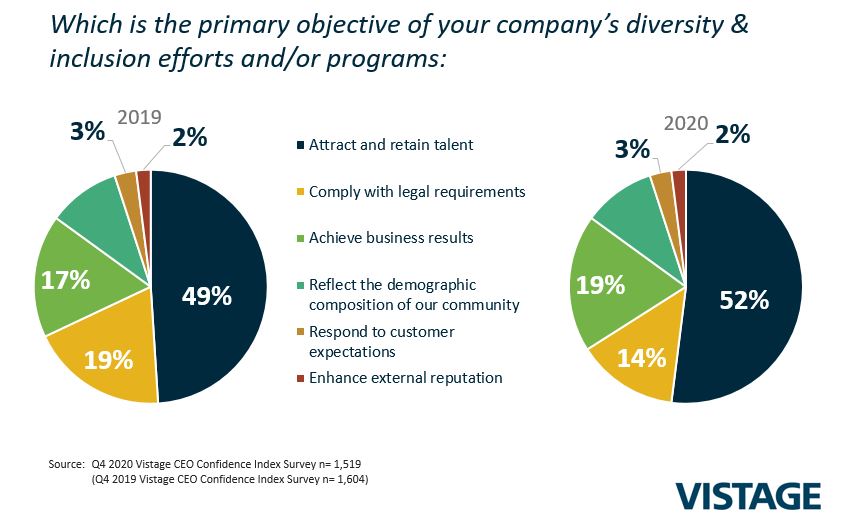
A deeper analysis of the responses, using the 7-point Likert scale ranging from strongly disagree to strongly agree, found advances in D & I strategies among CEOs from 2019 to 2020.
- When asked in December of 2020 if D & I was a key part of their talent development strategies, 38% of CEOs agreed or strongly agreed compared to just 24% in 2019, a jump of 14 points and a 60% increase. On the other end of the spectrum, 13% disagreed or strongly disagreed, down 2 points from 15% in 2019. Talent development is a competitive advantage for retention and hiring. Employees expect more than a job and compensation. Today they are looking for organizations that are willing to invest in them. Expanding beyond job skills, incorporating Diversity and Inclusion training to an employee development program raises awareness and sensitivity to Diversity and Inclusion issues, provides a common language and platform to have sensitive discussions between leaders, employees and peers.
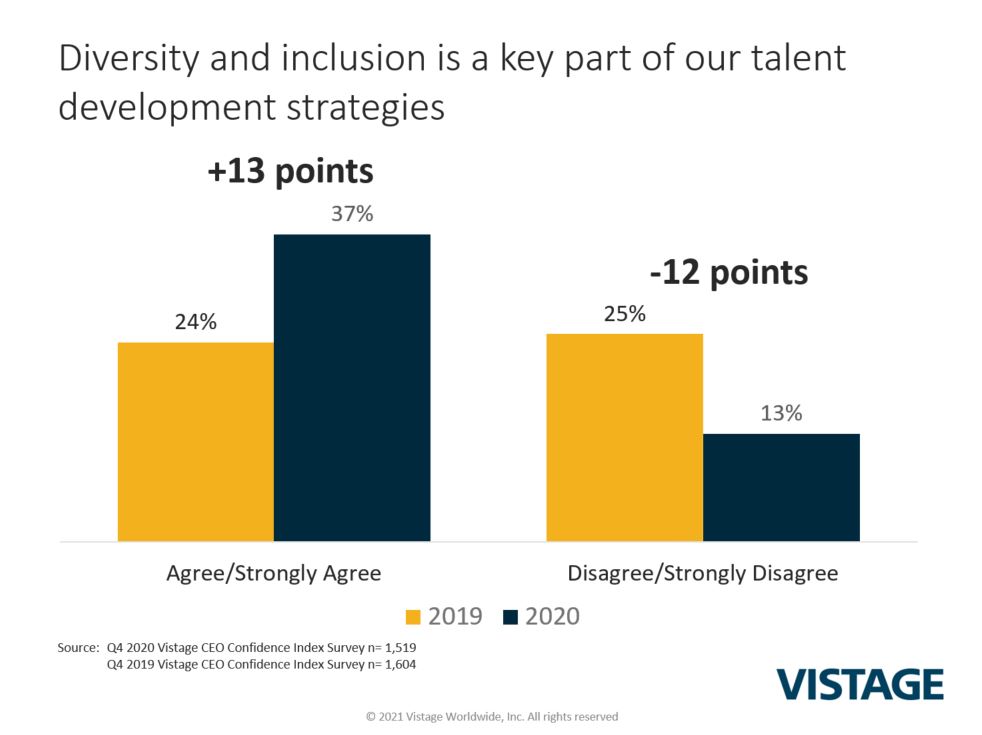
- In 2020, 37% of CEOs agree or strongly agree the increasing importance of D & I is a priority for them, up from 24% in 2019. Contrast this to the 11-point drop of CEOs who disagree/strongly disagree, falling to just 13% in 2020 from 24% in 2019. The benefits of making D & I a priority has captured the attention of CEOs. In addition to recruiting, a healthy D & I program will help retain current employees. Existing workers are also looking for an inclusive environment and a company culture with a purpose that embraces diversity, something Millennials and Gen X employees value in their workplace.
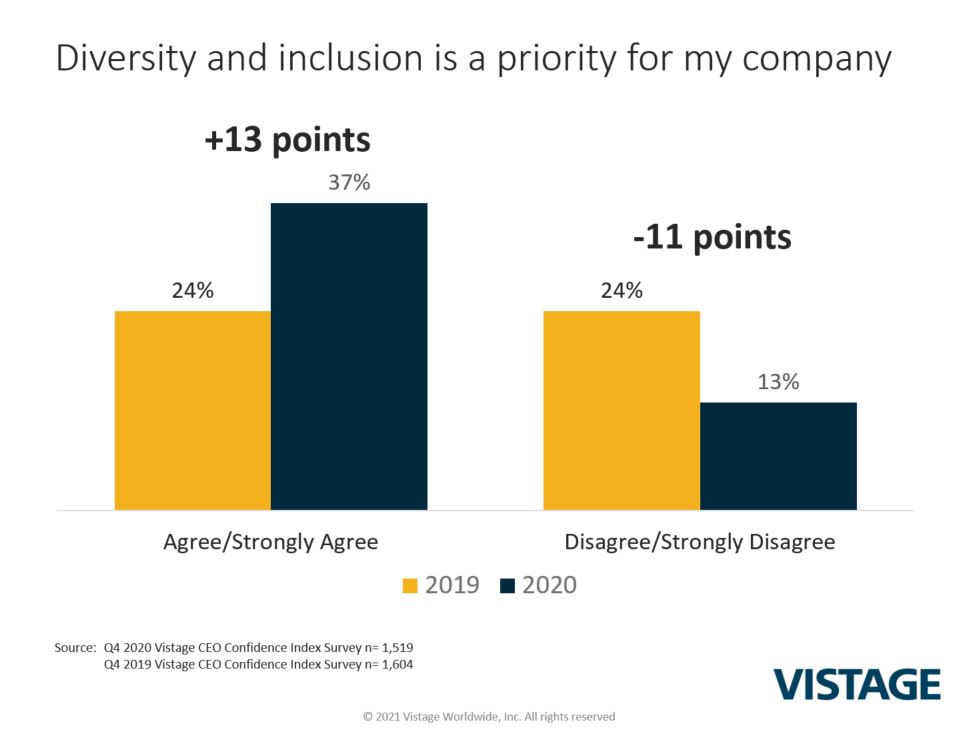
- CEOs have also increasingly recognized that D & I is critical to their company’s performance and success. 38% agreed/strongly agreed in 2020, up 11 points from 2019, while 15% disagreed/strongly disagreed, down from 25% in 2019. Human capital is the fossil fuel for the growth engine. As the workforce evolves and demographics continue to change, CEOs that create an inclusive environment will be better able to retain and attract workers at all levels and promote a positive work environment in which everyone can thrive which will translate to increased performance and better results.
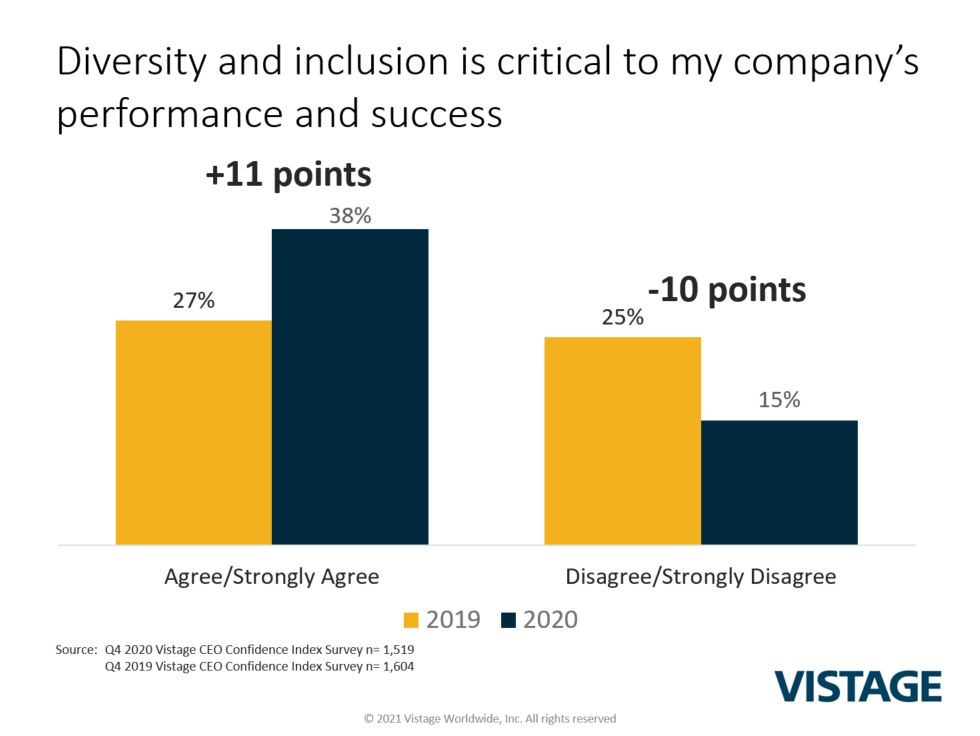
- CEO satisfaction with the level of D & I in their company grew as well, although not as much as the other categories. The percentage of CEOs that agreed/strongly agreed that they were satisfied with the level of Diversity and Inclusion in their company today, grew 5 points from 2019, reaching 44%. Just 10% of CEOs were not satisfied, a 5-point drop as from 2019. D & I as a strategy, priority and day-to-day reality begins and ends with the CEO. While every leader must choose for themselves the right approach for their business, employees will be watching closely. Respect for the individual is demonstrated by the behavior of the CEO and resonates throughout the company’s culture.
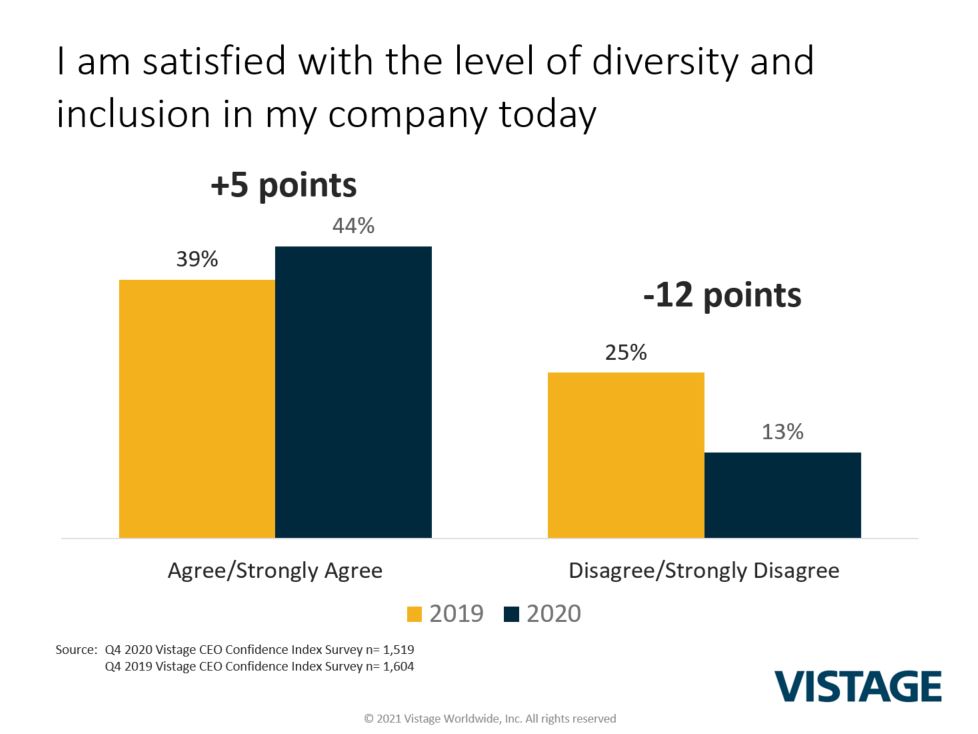
Creating and promoting a safe, diverse and inclusive workplace for all employees is increasingly important and becoming a competitive advantage as the emerging workforce is looking for a positive work environment. With multiple employment opportunities readily available to them, employees aspire to a workplace where they feel comfortable and accepted. For organizations already down the path of Diversity and Inclusion, the march continues. For those yet to initiate or fully embrace a Diversity and Inclusion program, now is the time to recognize the changing world we occupy and begin to realize the performance and success dividend that comes from Diversity and Inclusion initiatives.
Related content
- Making inclusion a part of your organization’s culture
- 5-point action plan for building a more inclusive workplace
Category : Organizational Culture & Values

